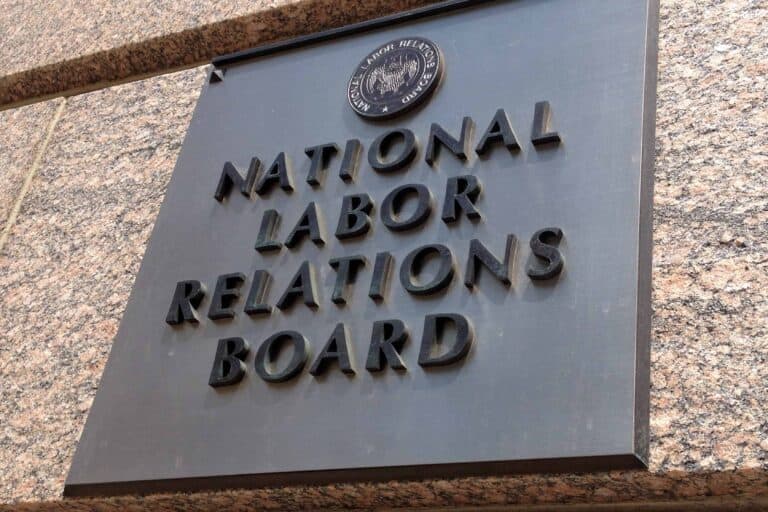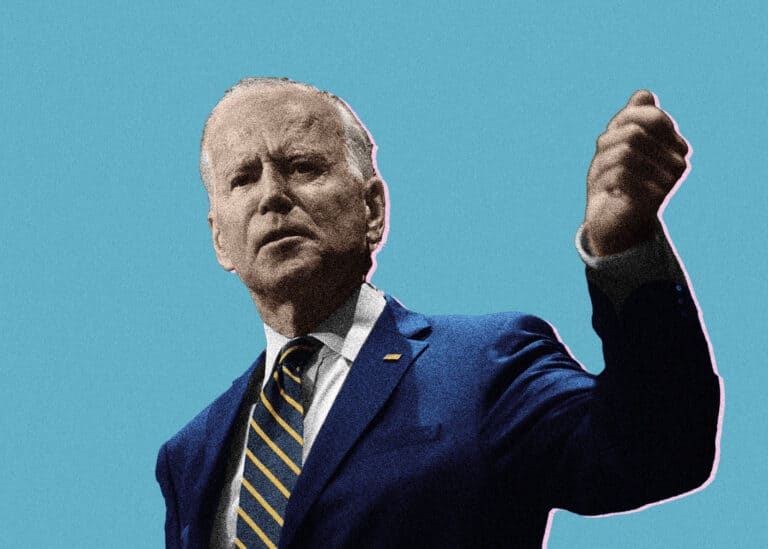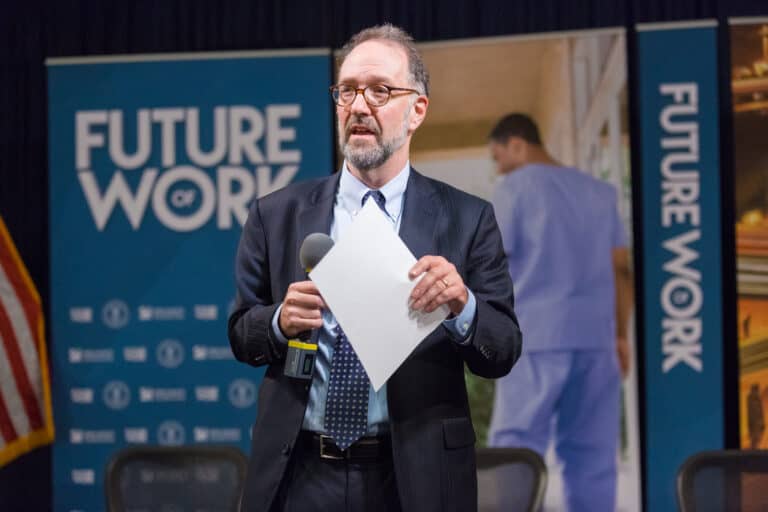Jasmine Loo is a student at Harvard Law School and a member of the Labor and Employment Lab.
A History of Violence and Enforcement against Undocumented Workers
Undocumented workers have been enduring a rollercoaster of sharply contrasting immigration policies over the past twenty-odd years. However, the Biden administration’s decisive and early actions on immigration reform are giving immigrants hope.
In 1996, President Bill Clinton signed the Illegal Immigration Reform and Immigrant Responsibility Act, described as “one of the most draconian … pieces of anti-immigration legislation in U.S. history”. It greatly increased the penalties on all immigrants who violated U.S. law, facilitated deportation and made the legalization of undocumented immigrants practically impossible, making deportation a common phenomenon for the first time. Following Clinton, President George W. Bush also “cracked down” on immigrants after the 9/11 attacks and deported close to 2.5 million immigrants, with mass raids of work sites being a staple of his tenure.
The administration of President Obama was unable to persuade Republicans to side with his immigration reform plans, which Obama described as the “biggest failure” of his first term. President Obama then turned to executive action to implement the Deferred Action for Childhood Arrivals (DACA). On undocumented workers, while the Obama administration preferred “paper raids” that investigated employers for exploiting undocumented workers, his administration still deported more immigrants than any other. In sharp contrast, President Donald Trump’s administration’s immigration policy was characterized by zero-tolerance policy, separations of parents and children, a fervor of worksite raids and mass indiscriminate deportations.
The Humane New Approach Under Biden: A Hopeful Beginning
President Biden’s approach has been radically different from his predecessors. Right from the start, he signed executive orders reversing Trump’s travel bans, protecting DACA, reuniting separated families and reviewing the obstacles to legal immigration. His newly-appointed U.S. Department of Homeland Security (DHS) Secretary, Alejandro Mayorkas, has already issued three new guidelines to Immigration and Customs Enforcement (ICE), Citizenship and Immigration Services and Customs and Border Protection, changing how immigration laws are enforced.
Secretary Mayorkas issued a memorandum on September 30, 2021 that restricts the enforcement of civil immigration law to only persons who are threats to “national safety, public safety and border security”, extends prosecutorial discretion to allow for all factors, including the assertion of labor rights, to be considered as mitigating factors and establishes the “fact an individual is a removable noncitizen therefore should not alone be the basis of an enforcement action against them”.
A second guidance memorandum was issued on October 12, 2021. Its consequences are that “mass worksite operations”, or mass raids whereby hundreds of alleged undocumented workers are arrested, will cease with immediate effect. The memorandum also encourages “prosecutorial discretion” for “victims of, or witnesses to, workplace exploitation”, in order to facilitate their participation in enforcement proceedings against exploitative employers.
A third memorandum issued on October 27, 2021 establishes new “protected areas” providing emergency shelter or humanitarian care, in which enforcement action should not take place. This extends the previous federal list of “sensitive locations” to include all medical facilities, domestic violence shelters, places where children gather, like playgrounds and school bus stops, social services establishments and demonstrations.
Overall, these policies mark a significant shift in enforcement against undocumented workers, with plans being developed to encourage victims of labor trafficking and exploitation to cooperate in the prosecution of their employers, by shielding them from deportation and reforming the usage of E-Verify to prevent worker retaliation by employers. A report on the new plans to carry out these policies is expected 60 days after the memorandum is published.
Undocumented Workers Offered More Protections From Unscrupulous Employers
Since 2011, the Department of Labor (DOL) and DHS have agreed to a revised Memorandum of Understanding (MOU) to prevent conflicts between the worksite-enforcement activities of both agencies, with the Equal Employment Opportunity Commission (EEOC) and the National Labor Relations Board (NLRB) joining the agreement in 2016. Under this MOU, the DHS will not engage in civil worksite enforcement at worksites which are subject to investigation by the DOL, EEOC or NLRB (“labor agencies”).
The October 12, 2021 memorandum’s focus on “unscrupulous employers who exploit the vulnerability of undocumented workers” with “substandard” pay and inhumane work conditions therefore strengthens the purpose of the original MOU: to protect workers seeking to enforce their labor rights from retaliation by deportation-threatening employers.
Firstly, the memorandum immediately ceases mass worksite immigration enforcement operations. Wherever mass raids are conducted, they not only terrorize undocumented workers, but also their families and communities. A 2007 study indicates that a majority (64%) of the children impacted by the deportation of their immigrant parents are United States-born citizens, and are often dependent preschoolers or toddlers, with 65% aged ten and younger. Children suffer from long-lasting trauma, disruption and insecure care due to the loss of one or both caregivers. The Biden administration’s new direction has therefore been praised as a “transformational change” from previous policies by an immigrant rights advocate.
Secondly, the memorandum expands the prosecutorial discretion of DHS officers to consider “all relevant facts and circumstances” to evaluate, on a “case-by-case basis” whether to prosecute victims or witnesses to workplace exploitation. Although undocumented workers face immense exploitation, ranging from wage theft, unsafe working conditions and sexual harassment, they are often afraid to report such violations due to fears that immigration officials would arrest them during employment proceedings and then deport them. This naturally has a chilling effect on undocumented workers enforcing their labor rights. Although the new Labor Secretary Marty Walsh has been campaigning to raise awareness and given assurances that the DOL would not ask about a worker’s immigration status, workers still remain reluctant to speak up due to fear of the consequences. Therefore, prosecutorial discretion would give federal labor violation investigators more leeway to effectively procure the evidence and testimony needed from undocumented workers to prosecute their employers.
Thirdly, the memorandum requests a review of DHS policies and strategies to “[support] the enforcement of employment and labor standards”, “alleviate the fear … that victims of … labor trafficking and exploitation may have regarding their cooperation with law enforcement”.
Overall, these changes reflect the guidance memorandum’s “fundamental principles” of flattening demand for undocumented workers by targeting and punishing unscrupulous employers and by enhancing the ability of vulnerable workers to participate in investigations and report labor law violations. This concords with the general sentiment of immigration advocacy groups, such as the National Partnership for New Americans. However, advocacy groups continue to call for stronger, pro-immigrant measures, such as stronger legal protections for undocumented workers who entered the United States as children, avenues for undocumented workers to legalize their immigration status, and better communication of these policies to a distrustful undocumented immigrant community.
Ultimately, although the memorandum does not fix America’s battered immigration system, it symbolizes a new ray of hope for undocumented workers.










Daily News & Commentary
Start your day with our roundup of the latest labor developments. See all
July 4
The DOL scraps a Biden-era proposed rule to end subminimum wages for disabled workers; millions will lose access to Medicaid and SNAP due to new proof of work requirements; and states step up in the noncompete policy space.
July 3
California compromises with unions on housing; 11th Circuit rules against transgender teacher; Harvard removes hundreds from grad student union.
July 2
Block, Nanda, and Nayak argue that the NLRA is under attack, harming democracy; the EEOC files a motion to dismiss a lawsuit brought by former EEOC Commissioner Jocelyn Samuels; and SEIU Local 1000 strikes an agreement with the State of California to delay the state's return-to-office executive order for state workers.
July 1
In today’s news and commentary, the Department of Labor proposes to roll back minimum wage and overtime protections for home care workers, a federal judge dismissed a lawsuit by public defenders over a union’s Gaza statements, and Philadelphia’s largest municipal union is on strike for first time in nearly 40 years. On Monday, the U.S. […]
June 30
Antidiscrimination scholars question McDonnell Douglas, George Washington University Hospital bargained in bad faith, and NY regulators defend LPA dispensary law.
June 29
In today’s news and commentary, Trump v. CASA restricts nationwide injunctions, a preliminary injunction continues to stop DOL from shutting down Job Corps, and the minimum wage is set to rise in multiple cities and states. On Friday, the Supreme Court held in Trump v. CASA that universal injunctions “likely exceed the equitable authority that […]